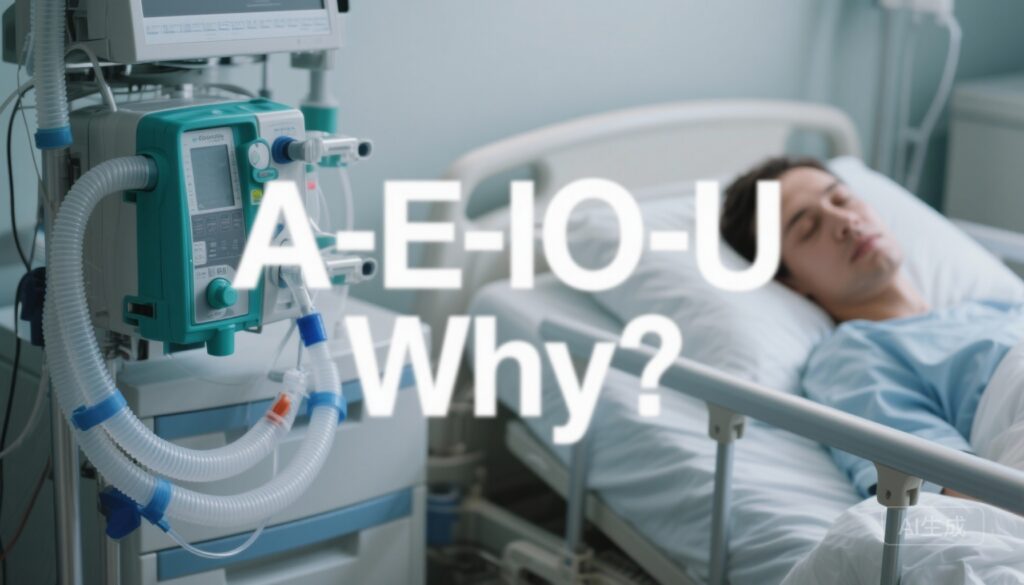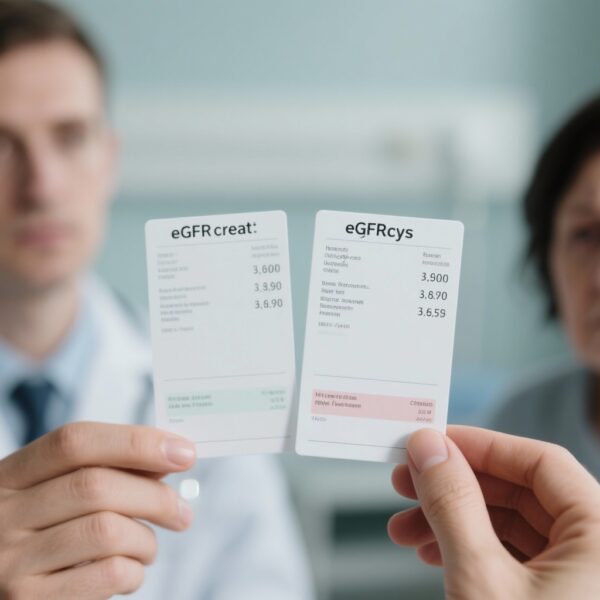Highlights
– LIBERATE‑D randomized 220 non–critically ill patients with AKI requiring at least one dialysis session to a conservative discontinuation strategy (redialyze only for A‑E‑I‑O‑U criteria) versus a conventional thrice‑weekly continuation until predefined kidney recovery criteria. Conservative management increased dialysis‑free recovery at discharge (64% vs 50%) and reduced sessions and time to recovery without excess adverse events.
– Statistical robustness is limited: unadjusted significance was marginal with a fragility index of 0, and prespecified adjusted analyses lost statistical significance. The conventional arm used strict recovery criteria that may not reflect everyday practice, raising the possibility the trial compared appropriate discontinuation against protocolized overcontinuation.
– For hemodynamically stable patients with recovering AKI, the trial reinforces that residual kidney function should be preserved where safely possible; the results should prompt clinicians to reassess automatic thrice‑weekly prescriptions and to ask “why” before continuing KRT.
Background and clinical context
Students learn the indications for dialysis in acute kidney injury (AKI) as the vowels: A‑E‑I‑O‑U (acidosis, electrolytes, ingestions, overload, uremia). Historically, hemodialysis prescriptions evolved from long, infrequent sessions required by older technology to the now‑familiar thrice‑weekly schedule for maintenance dialysis. That standard, however, was developed for chronic kidney failure and does not automatically apply to AKI, where residual renal function and the trajectory of recovery are often central to outcomes.
Over the past two decades large randomized trials established that more intensive dosing or earlier initiation of kidney replacement therapy (KRT) in AKI does not improve survival or recovery and may sometimes delay renal recovery. Notable trials include ATN and RENAL (intensity comparisons) and AKIKI, ELAIN, IDEAL‑ICU, and STARRT‑AKI (timing comparisons), which collectively moved the field away from routine intensification or premature initiation of KRT in many patients.
Study design — LIBERATE‑D at a glance
LIBERATE‑D (Liu et al.) enrolled 220 patients across 4 centers who had AKI severe enough to receive at least one dialysis session but were not critically ill (trial excluded patients on vasopressors or mechanical ventilation). Participants were randomized to one of two strategies:
- Conservative strategy: after the index dialysis the team would continue KRT only if patients developed conventional A‑E‑I‑O‑U indications (protocolized thresholds were arterial pH <7.15, K+ >6 mmol/L or >5.5 mmol/L despite therapy, serum urea nitrogen >112 mg/dL, or clinically significant volume overload with hypoxemia), with allowance for clinician judgment.
- Conventional strategy: patients were assigned a thrice‑weekly hemodialysis schedule and remained on KRT until meeting strict kidney recovery criteria (timed creatinine clearance ≥8 mL/min, 24‑hour urine ≥1 L/d off diuretics or ≥2 L/d with diuretics, or a spontaneous creatinine fall >0.3 mg/dL over 12 hours), or until clinicians elected to stop treatment off‑protocol.
The primary outcome was kidney recovery at hospital discharge: alive and free of dialysis for ≥14 days (including after discharge). Secondary outcomes included number of dialysis sessions, time to recovery, and adverse events.
Key findings
Primary outcome: Kidney recovery at hospital discharge occurred more often in the conservative arm: 70 of 109 patients (64%) versus 55 of 109 (50%) in the conventional arm. The absolute difference was ~14% favoring conservative management.
Dialysis exposure and kinetics of recovery: Patients randomized to the conservative strategy received substantially fewer dialysis sessions (mean 1.8 vs 3.1 sessions) and recovered renal function earlier (median 2 days vs 8.5 days after randomization).
Safety: The conservative approach was not associated with a clear increase in adverse events captured by the trial. Notably, more than one‑third of patients in the conservative arm did not require any further dialysis after randomization; fewer than 10% in the conventional arm avoided additional sessions. This immediate divergence after enrollment raises questions about whether many control patients were continued on dialysis without a clear clinical mandate.
Statistical considerations and robustness
Several statistical caveats temper interpretation. The observed difference met unadjusted statistical significance but with a fragility index of 0, indicating small changes in event classification could eliminate significance. A prespecified adjustment for baseline covariates rendered the primary comparison nonsignificant. These features indicate modest statistical robustness and justify cautious interpretation, especially for definitive practice‑changing claims.
External validity and control strategy
An important interpretive issue is whether the conventional arm reflects contemporary practice. The protocolized recovery thresholds used to stop dialysis in the conventional arm were conservative and arguably more stringent than many clinicians would require in practice. Thus, the trial might more accurately be framed as comparing guideline‑based or clinically tailored discontinuation (conservative) versus a protocol that tended to continue dialysis longer than many practitioners would. If so, the trial’s principal achievement is not merely showing that less dialysis is noninferior, but demonstrating that avoiding unnecessary continuation of KRT accelerates recovery and reduces exposure without apparent harm.
Biologic plausibility: why might dialysis delay recovery?
Several plausible mechanisms link dialysis exposure to delayed kidney recovery. Intermittent hemodialysis imposes rapid shifts in blood volume and solute concentrations that can precipitate intradialytic hypotension and renal ischemia, and repeated exposures to synthetic membranes and extracorporeal circuits can activate inflammatory cascades. Continuous modalities can also modulate renal hemodynamics and may reduce urine output acutely in animal models.
Beyond hemodynamic and inflammatory mechanisms, modern KRT indiscriminately clears small solutes—including phosphate, amino acids, and trace elements—that the native kidney carefully reabsorbs. Loss of these molecules could alter tubular cell metabolism or repair processes. Membrane biocompatibility, anticoagulation strategy, and ultrafiltration rates are further variables that may modulate kidney recovery and warrant mechanistic study.
Clinical implications — what should clinicians do now?
For hemodynamically stable patients with AKI who have potential for renal recovery, LIBERATE‑D supports a practice of active reassessment and conservative discontinuation of KRT rather than automatic assignment to a thrice‑weekly regimen after the initial session. Practical steps:
- After an initial life‑saving dialysis session, reassess clinically and biochemically before scheduling routine thrice‑weekly treatments. If A‑E‑I‑O‑U thresholds are not met and the patient’s trajectory favors recovery, defer or hold further sessions with close monitoring.
- Use clinical judgment. LIBERATE‑D excluded patients on vasopressors or mechanical ventilation; do not extrapolate conservative discontinuation to unstable, critically ill patients where intensive KRT may be needed for fluid or metabolic control.
- Document explicit criteria for restarting KRT and ensure systems for prompt reassessment and dialysis delivery if indications recur.
- Monitor for dialysis‑associated complications (hypotension, electrolyte shifts, access‑related infection) and consider strategies to minimize these risks should dialysis be required.
Limitations and unanswered questions
Key limitations include the trial’s moderate sample size and marginal statistical robustness, the stringency of the conventional arm’s stopping rules that may not reflect typical practice, and exclusion of critically ill patients. Important unanswered questions remain regarding which patient subgroups derive the largest net benefit from conservative discontinuation and the physiologic mechanisms by which KRT might impede renal recovery.
Research and technological priorities
Future research should pursue three domains. First, confirmatory multicenter trials with larger samples and pragmatic control arms reflecting contemporary practice would strengthen confidence in changing standards. Second, mechanistic studies should evaluate hemodynamic, inflammatory, and metabolic impacts of differing KRT intensities, including the consequences of removing amino acids, phosphate, and trace elements. Third, technology development should aim to make extracorporeal therapies less inflammatory and more selective—membranes and sorbents that better mimic glomerular and tubular function may reduce iatrogenic loss of metabolically important solutes.
Conclusion
LIBERATE‑D prompts clinicians to add a final question to the mnemonic A‑E‑I‑O‑U: always ask why. For hemodynamically stable patients with AKI who show potential for recovery, continuing dialysis by rote—particularly on a thrice‑weekly schedule—may be unnecessary and could delay renal recovery. Although statistical caveats and trial design features counsel cautious interpretation, the trial complements a growing evidence base that more is not always better with KRT in AKI. Individualized, reassessment‑based strategies that prioritize preservation of residual kidney function are now clinically defensible and, for many patients, preferable.
Funding and trial registration
Refer to the original trial report by Liu and colleagues for detailed statements on study funding and clinicaltrials.gov registration.
Selected references
– Waikar SS. A‑E‑I‑O‑U and Sometimes Why—Dialysis in Acute Kidney Injury. JAMA. 2025 Nov 7. doi:10.1001/jama.2025.21618.
– Palevsky PM, et al. Intensity of renal support in critically ill patients with acute renal failure. N Engl J Med. 2008;359:7–20. (ATN trial)
– RENAL Replacement Therapy Study Investigators. Intensity of continuous renal‑replacement therapy in critically ill patients. N Engl J Med. 2009;361:1627–1638. (RENAL trial)
– Gaudry S, et al. Initiation strategies for renal‑replacement therapy in the intensive care unit. N Engl J Med. 2016;375:122–133. (AKIKI trial)
– Zarbock A, et al. Early versus delayed initiation of renal replacement therapy in critically ill patients with acute kidney injury (ELAIN): a randomized clinical trial. JAMA. 2016;315(20):2190–2199. (ELAIN)
– STARRT‑AKI Investigators. Timely initiation of renal‑replacement therapy in acute kidney injury. N Engl J Med. 2020;383:240–251. (STARRT‑AKI)
– KDIGO Clinical Practice Guideline for Acute Kidney Injury. Kidney Int Suppl. 2012;2:1–138.
Author note
This article synthesizes the LIBERATE‑D report and prior trials to place discontinuation strategy into clinical context. Clinicians should consult the full trial publication and local protocols when changing practice.



